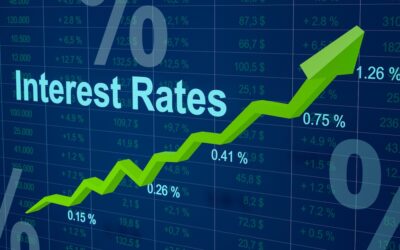There’s no shortage of coverage and comment on how the price of everything from energy to food is rising at an alarming rate. But there’s another aspect to the cost of living crisis that should be getting more attention than it is at present. And that’s the fact that the cost of borrowing is going up, too.
After almost 15 years of historically low interest rates, spiralling inflation has finally taken its toll. The Bank of England’s latest decision to push the base rate up to 2.25% is the seventh consecutive increase. There are forecasts that the base rate could reach 3% by the end of the year, and then go as high as 4.25% by August 2023.
This is not great news for anyone paying off a credit card, personal loan, mortgage or financing arrangement. The amount you are paying back in interest could be as much as three times higher in 12 months’time. The cost of your debt is going up and up.
For anyone who relies on credit to plug gaps in their cash flow, it’s the financial equivalent of being trapped in a pincer movement. You are getting squeezed from above and below. Not only are soaring prices stretching how far your income goes, you are also paying more to borrow to make your income stretch far enough.
In 2021, average loan repayments in the UK hit a record £373, up 22% year on year and the highest figure in more than a decade. We can expect that figure to be dwarfed in the next 12 months.
Homeowners in the firing line
What’s so concerning about the cost of debt rising is that it has the potential to drag even relatively high earners into financial difficulties. Problem debt is often characterised as a scourge of low-income households, and there is no doubt that rising cost of credit will cause severe additional hardship for people who rely on borrowing to cover essential outgoings.
The Joseph Rowntree Foundation has, for example, reported that arrears in personal borrowing among households in the bottom 40% income bracket have doubled in seven months. Some 1.3 million households are already borrowing to pay for essentials like food.
But there is also concern about the impact on higher earners who carry proportionately higher debts, especially mortgages. People in higher income brackets are reported to be twice as likely to have variable rate debts that are susceptible to big interest rate increases.
For example, anyone not already locked into a long-term fixed rate mortgage faces big increases in their monthly repayments over the next year. Government figures suggest that a 2% increase in the base rate (so less than the 2.5% worst case scenario increase forecast by August next year) would see repayments on a £200,000 mortgage go up by £200 a month.
It’s therefore essential that if you are budgeting for the next 12 months – which, given the ongoing cost increases we’re all facing we would strongly advise everyone to do – not to make the mistake of assuming all your debt repayments are a fixed cost. Many of them won’t be, and are likely to increase significantly over the course of the next year.
If you want a clear picture of the health of your finances going forward, it’s important to factor in increases in interest repayments. And if that pushes your debt burden into the realms of being unmanageable, it’s equally important that you act fast to reduce your liabilities. For advice on how to go about that, get in touch with our personal debt advisers for a free, confidential and completely impartial consultation.




